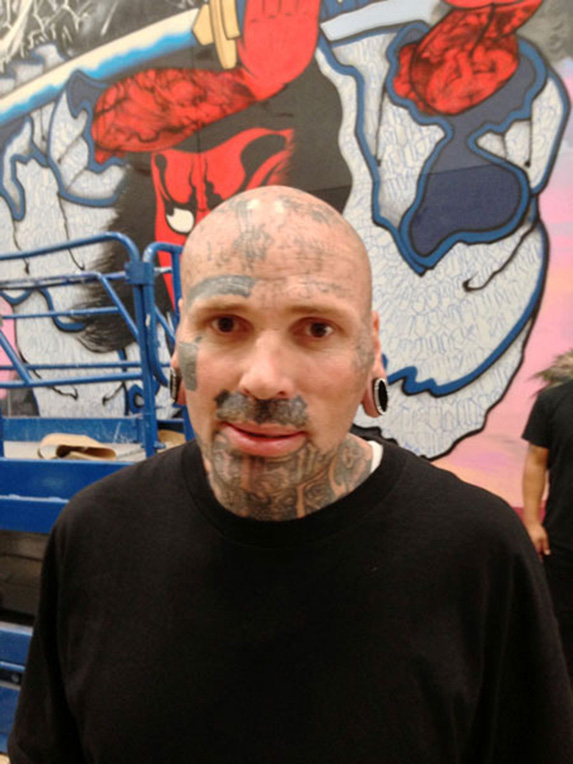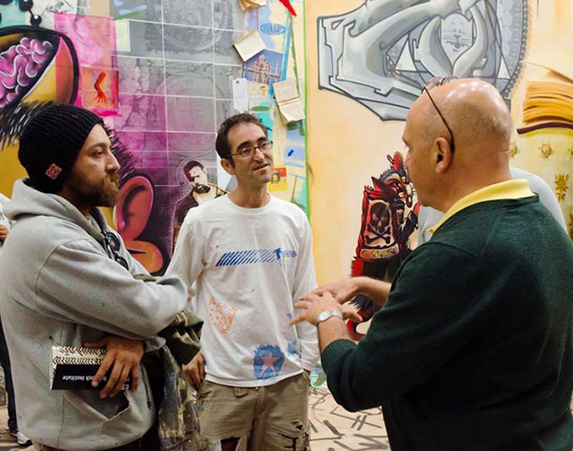Each of the invited artists had a crew of friends helping with the project. So, when I stepped in, it felt like a big, popping party. Just imagine being in a big, noisy, bustling kitchen with dozens of cooks stirring and chopping away. As far as I could tell, no alcohol or any other substances were involved, but some people were wearing face masks to protect them from the paint fumes.
Being introduced to a few participants, I had the chance to talk to them about this project and about art in general. I have to admit that the thoughtfulness and eloquence with which they spoke about art surprised me quite a bit. Why? Probably because, for me, as I’m sure it is for many of you, the word graffiti is typically associated with the act of vandalism, with tagging and defacement in public spaces. But here, in El Segundo, after spending a couple of hours observing these artists in the process of working, one simply cannot leave without a sense of respect for their commitment to their art.
Three years ago, a provocative exhibition at MOCA, Art in the Streets, introduced us to the fact that street art at its best can be challenging and worthy of our appreciation. But this upcoming exhibition at ESMoA raises the bar a few notches higher – it’s done in collaboration with the Getty Research Institute and will include several rare first edition books from the Getty collection. In preparation for the exhibition, the participating street artists were invited to view a collection of the Getty’s rare books, including the first edition of Dürer’s landmark book on perspective.
By sheer coincidence, the same day I went to El Segundo to see graffiti art I also received a very sexy email from Leslie Sacks Fine Art, a well known LA gallery. The email contained half a dozen images of erotic etchings by Picasso that the gallery is selling right now. Some of them, subject-wise, are very graphic indeed. So why, you might ask, when great artists like Picasso deal with such a risqué subject, it is considered art. And why, in many cases, we dismiss such imagery as pornography. In a strange way, it parallels the issue of graffiti as art versus graffiti as vandalism.
Take a look at the Picasso images on our website. You see, this Spaniard is not just a genius artist, he also has a wonderful sense of humor. And if you do not giggle while looking at these etchings, you’re missing quite a lot. Pornography raises – pun not intended – only one issue. Picasso, as any other great artist dealing with erotic subjects, is concerned with the whole gamut of issues –– moral, aesthetic, and artistic.
few years ago, I talked about the amazing juxtapositions of two great paintings exhibited at the Museu Nacional D’Art de Catalunya in Barcelona: famously infamous “The Origin of the World” (1866) by Gustav Courbet, and a contemporary response to that by famous Spanish artist Antoni Tàpies. The subject of these two paintings, the female anatomy, is what pornography usually thrives on. But in the hands of these two artists, it’s pure art. I wonder what you think about all this.

